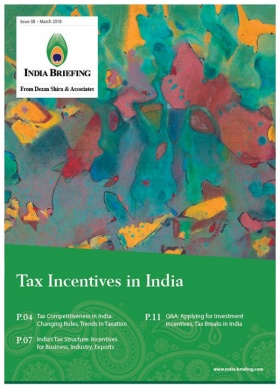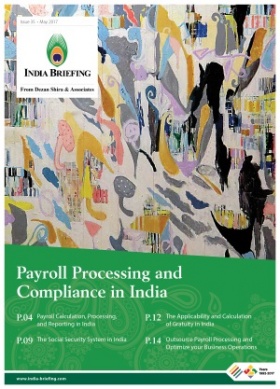GSTR-3B: Filing GST Returns in India
Last year saw an overhaul of the indirect tax system in India with the implementation of the Goods and Services Tax (GST).
Hopes were high that the GST would introduce clarity, transparency, and ease of use – a departure from the previously convoluted tax structure. Unfortunately, to the dismay of a multitude of businesses, implementation of the GST on the ground has been far from steady.
The GST Council, responsible for rolling out the new taxation system, has met 26 times since 2016, with the latest meeting on March 10, 2018. In the process, several policy changes and tax rate revisions have come into effect. While the hope for a structured and organized GST system remains, what this will look like is uncertain.

 In this article, we discuss the special GST return form 3B – introduced as a temporary measure to smoothen the transition for traders and businesses onto the new indirect tax system.
In this article, we discuss the special GST return form 3B – introduced as a temporary measure to smoothen the transition for traders and businesses onto the new indirect tax system.
Information on other simple return forms and the registration process can be found here.
GSTR-3B – Simple return until June 2018
GSTR-3B is an alternate form to GSTR-3. The GST Council introduced this form to ease the changeover for businesses from the previous tax system to the GST system.
Initially supposed to be a provisional measure, its use has since been extended to June 2018. Detailed user manuals are now available for reference outlining the procedures for filing this form.
Unlike the original form, which is GSTR-3, the special form GSTR-3B does not require a comparison of invoices between supplier and purchaser. This means that the two contracting parties can file the 3B form separately. This avoids the need for multiple checks between the supplier and purchaser that could cause delays in filing, thereby attracting late fees and interest.
The GSTR-3B must be submitted and tax paid by the 20th of the next month for which the GST is being filed. For instance, for the month of April, the form must be filed and tax paid by May 20. (Due to technical issues at the GST portal, the last date for filing the Form GSTR-3B for the month of April 2018 is extended from 20 May 2018 to 22 May 2018. See the official notification from the Central Board of Indirect Taxes and Customs here.)
The government on February 21, 2018 released a simplified version of this form to boost compliance by introducing a more user-friendly interface. Changes in the new version allow the following:
- Total tax liability can now be seen pre-submission as opposed to after the submission.
- The draft return may be downloaded so that the taxpayer can verify details offline.
- Each tax – SGST, CGST, and IGST – does not need to be inputted manually. Any one tax can be entered, and the others will be generated automatically. For instance, when CGST is entered, SGST and IGST are generated automatically, as applicable.
Filing GST returns – Still a work in progress
The fact that the government has been unable to phase out the GSTR-3B special form – instead improvising changes to its format and structure – is evidence that the execution of the GST remains very much a work in progress.
Since the implementation of invoice matching has yet to begin under the GST – input and transitional credit claimed by taxpayers in the forms GSTR 3B as well as TRANS 01 and TRANS 02 have come under the tax scanner. TRANS 01 and TRANS 02 refer to forms required to claim tax credit from the pre-GST system.
The GST Council will soon be auditing these forms in order to settle outstanding tax credit claims. While this is similar to proceedings under the previous indirect tax regime, taxpayers must be cautious while filing these credit claims. The GST Council will penalize any exaggerated claims made.
Lastly, in the case of delayed filing, the late fees for the GSTR-3B have been waived for the period of July to September 2017.
From October 2017, delayed filing will incur late fees, charged at:
- Rs 50 (US$0.77) per day; or,
- Rs 20 (US$0.31) per day in case of nil returns.
The maximum amount that can be charged as a late fine for delayed filing of GSTR-3B is Rs 5,000 (US$76.70); however, an 18 percent annual interest on the tax owed will also be charged.
About Us
India Briefing is published by Asia Briefing, a subsidiary of Dezan Shira & Associates. We produce material for foreign investors throughout Eurasia, including ASEAN, China, Indonesia, Russia, the Silk Road, & Vietnam. For editorial matters please contact us here and for a complimentary subscription to our products, please click here.
Dezan Shira & Associates provide business intelligence, due diligence, legal, tax and advisory services throughout India and the Asian region. We maintain offices in Delhi and Mumbai and throughout China, South-East Asia, India, and Russia. For assistance with India investment issues or into Asia overall, please contact us at india@dezshira.com or visit us at www.dezshira.com.
- Previous Article Tax Incentives in India – New Issue of India Briefing Magazine Out Now
- Next Article GST Compliance for Non-Resident Businesspersons, Diplomats, UN Personnel in India











